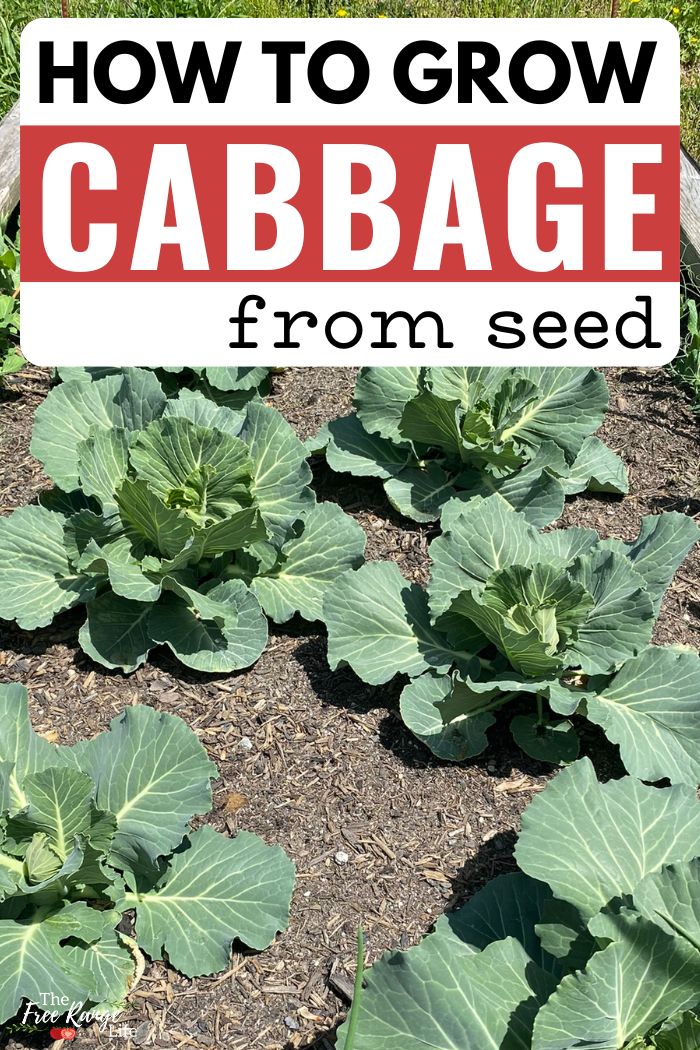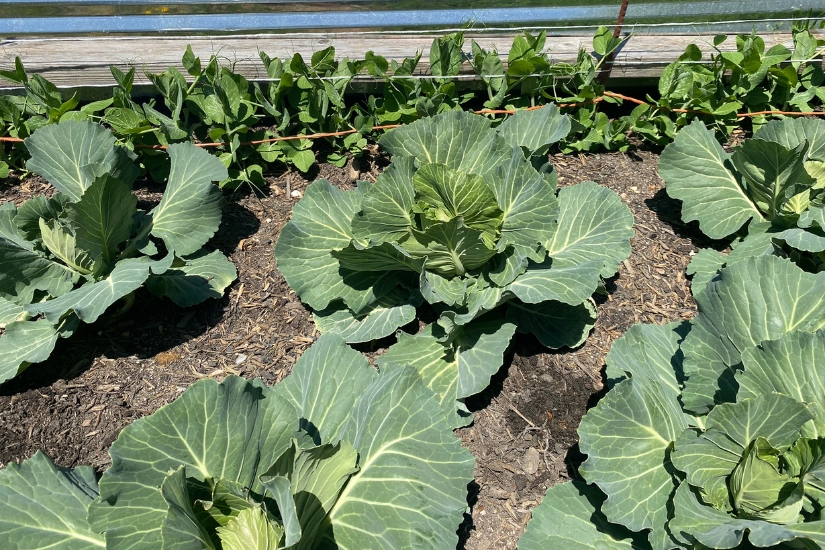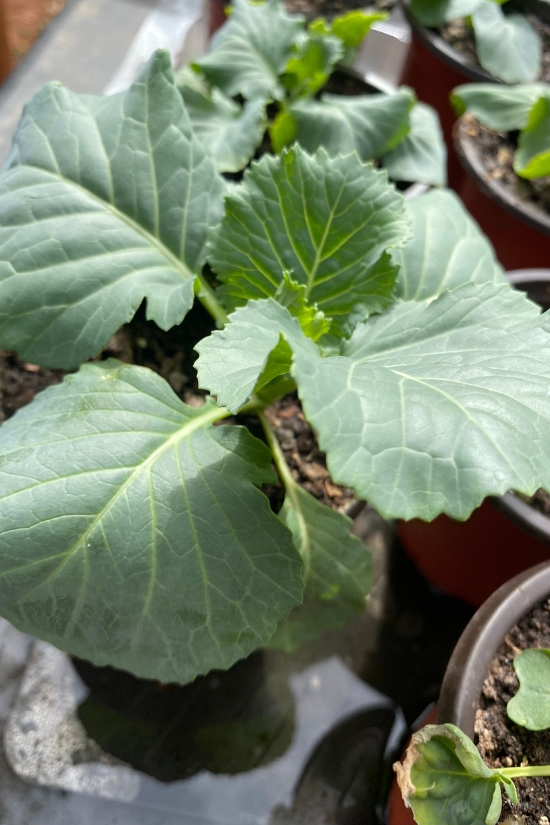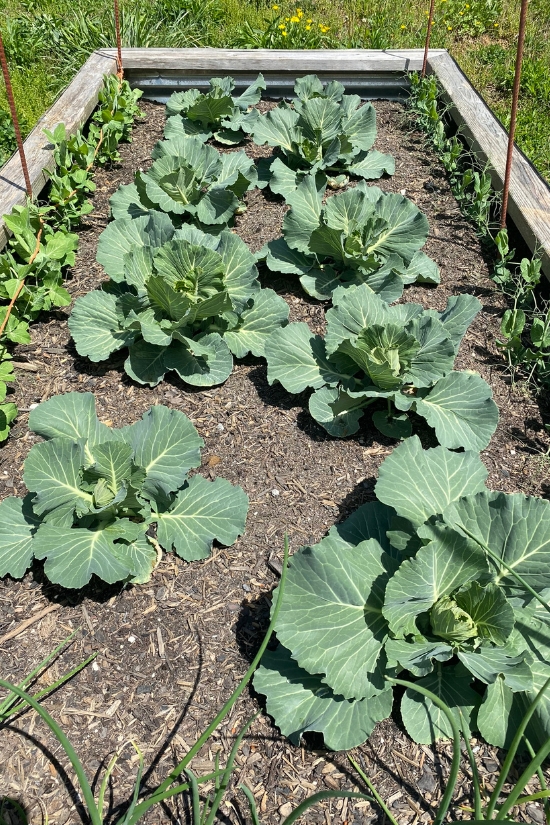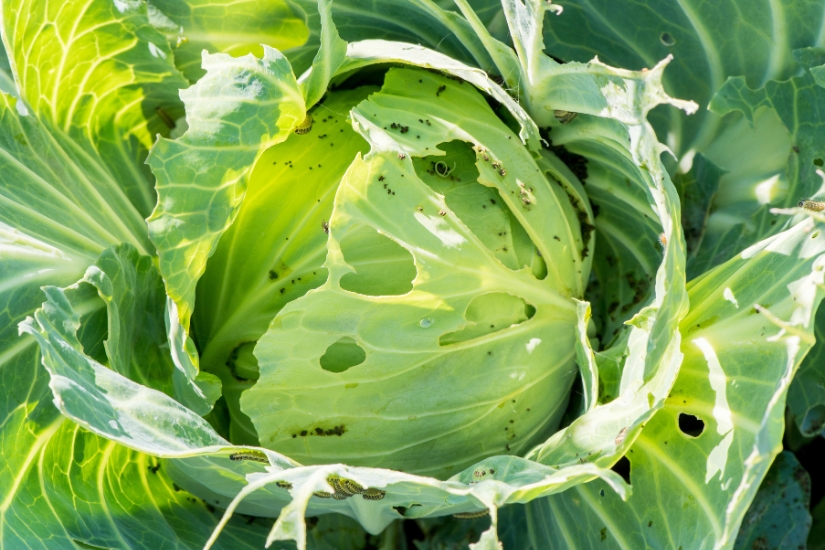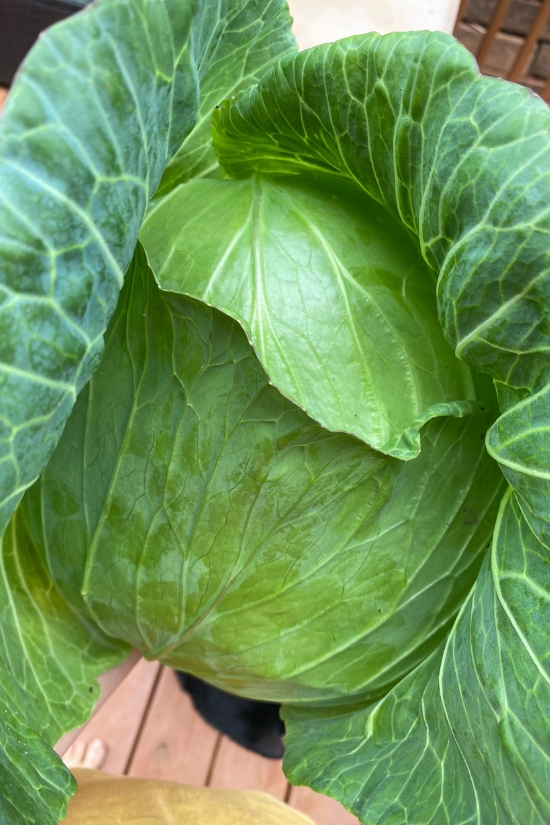Are you looking to add cabbage to your garden this year? Learn how to grow cabbage from seed for fresh cabbage all season long!
Cabbage is a member of the brassica family- just like broccoli and cauliflower. It’s a cool weather crop that thrives in early spring, fall, and even winter in some areas.
This site contains affiliate links. If you make a purchase using one of these links, I may earn a commission. Please see my disclosure page for more information about cookies collected and our privacy policy.
Cabbage is packed with vitamins and full of antioxidants- making it a great addition to any garden.
Cabbage Varieties to Try
There are a lot of options when it comes to cabbage- such as green, purple, or chinese cabbage.
When picking a variety it’s best to think about what your purpose is first. Do you want to eat it fresh? For storage? For sauerkraut?
Here are some cabbage varieties to try:
- Early Jersey Wakefield is an heirloom variety that’s early maturing and has tight heads.
- Sweet and Tender from Johnny’s Seeds is one of my favorites. It’s got great flavor and is very tender.
- Brunswick is an heirloom that’s a favorite for sauerkraut.
- Promise from Johnny’s Seeds is great for long term storage and produced large 6-8 lbs heads.
How to Grow Cabbage in Your Vegetable Garden
Cabbage is an easy to grow vegetable that’s perfect for the backyard gardener.
It’s a cool weather crop that can even grow year round in some locations.
Here’s how to grow cabbage in your garden!
When to Plant Cabbage
When it comes to planting cabbage, timing is key for growth success.
Cabbage needs a lot of time and space to grow, so it’s best to start your seeds indoors 8-10 weeks before the last spring frost.
Young plants can be planted outdoors about 3-4 weeks before your last frost date, but be sure to harden them off first.
For a fall harvest, direct sow your cabbage seeds in mid to late summer. If your area is particularly warm, you may want to start the seeds indoors and transplant them to the garden in late summer.
Where to Plant Cabbage
For optimal growth and yields, cabbage should be planted in an area that gets direct sunlight for at least 6-8 hours each day.
Temperature is also important; cabbage likes cool temperatures best, so choose a part of the garden that isn’t overly exposed to the hot summer sun.
Cabbage is a heavy feeder and can quickly deplete nutrients in the soil, so be sure to prepare your garden area with plenty of organic matter and compost before planting.
Soil should be well-draining to prevent root rot and splitting heads.
How to Start Cabbage Seeds Inside
Starting your cabbage seeds inside is a great way to get a head start on the garden season.
To start cabbage from seed, fill seed containers or trays with a quality seed starting medium.
Sow seeds about ¼ inch deep and cover lightly with soil.
Mist the soil well with water and keep the soil evenly moist at all times.
Keep the seeds in an area with plenty of light, such as under a window or grow lights.
Seeds should sprout in 4-10 days.
Once the cabbage seedlings have a couple of true leaves you can start bringing them outside to harden off during the day.
They can be transplanted into the garden 3-4 weeks before your last frost date in spring or in later summer for a fall/winter crop.
Planting Cabbage in the Garden
Cabbage plants should be spaced 12-24 inches apart. Remember the closer the plants, the smaller the heads of cabbage will be.
I tend to plant my closer to 12 inches apart but trim off the lower leaves as they grow to reduce crowding.
Caring for Cabbage
Overall, cabbage is an easy crop without a lot of day to day care. Compared to other crops that need staking and pruning, cabbages are pretty hands off.
Cabbage needs a lot of water for good growth, so if it hasn’t rained, you might need to water at least once a week.
They can also benefit from fertilizing a few weeks after transplanting. I have experimented with adding WOW Wallace Starter Packs at planting time and the cabbages (and broccoli) seem to love it and grow really well with this addition.
Cabbage Pests and Disease
The one thing that can make cabbage difficult is pests. Namely- caterpillars.
In my garden cabbage moths are the most problematic, but things like cabbage loopers and cabbage root maggots can also be an issue.
Luckily there’s an organic option to help fight caterpillars. Bacillus thuringiensis is a species of bacteria that lives in soil. It makes proteins that are toxic to some insects when eaten. It’s non toxic to humans and pets, but kills caterpillars.
Handpicking is also an option for caterpillars. They are easy to pull off and throw to the chickens or birds.
Other pests for cabbage include:
- Aphids
- Flea Beetles
- Snails
- Slugs
Diatomaceous earth can help with many of these. As can companion planting with things like onions, garlic, or flowers to bring in beneficial insects.
You can read more about companion planting here: Best Cabbage Companion Plants.
Some diseases include downy mildew, club root, and black rot. Rotating crops each year goes a long way in preventing these diseases.
Harvesting Cabbage
On average, cabbage is ready to harvest about 70 days after planting outside. Once you’ve reached about 70 days you can start checking your cabbage for readiness.
The head should be the desired size and feel firm. If you leave the heads on the stem for too long after they reach maturity, they can split.
To harvest, cut the cabbage head at the base with a sharp knife.
Remove any damaged or yellowed leaves, but retain the loose green leaves, as they can provide protection in storage.
Alternatively, you can encourage new, small heads to grow by cutting the head off, but leaving the outer leaves and roots in the ground. Harvest these new heads when they are about tennis ball size.
After harvesting, remove the remaining stems and roots from the soil to prevent disease.
How to Store Cabbage
Cabbage can be stored in the refrigerator for a couple weeks. You can extend this even longer by using green bags. Make sure the heads are completely dry before storing.
In proper conditions, such as a root cellar, cabbage can keep up to 3 months.
You can also preserve cabbage by freezing, dehydrating, or making sauerkraut.
Here are 10 Ways to Preserve Cabbage for a Longer Shelf Life.
Of if you want to dry your cabbage get Step by Step Instructions for Dehydrating Cabbage.
But, I find it’s best to eat as much fresh as you can!
We love to make cabbage noodles- basically saute thinly sliced cabbage in butter and garlic.
With a little care and attention, you can successfully grow cabbage in your own garden. So what are you waiting for? Get started today!

